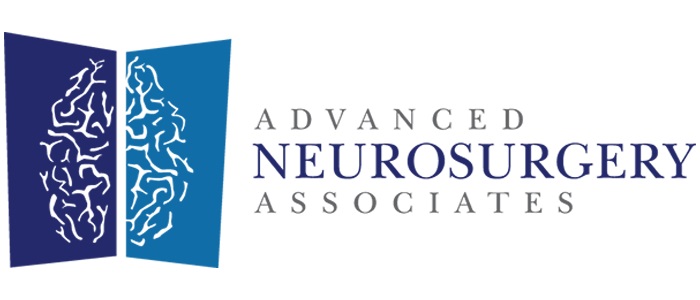With almost 60 years of combined experience, the Advanced Neurosurgery Associates (ANA) medical team diagnoses and surgically treats individuals suffering from a variety of neurological conditions, and ensures an unmatched level of expertise and knowledge in the field of neurosurgery.
[iframe width=”500″ height=”361″]//www.youtube.com/embed/LnSGS0R42YU?rel=0[/iframe]
Our Approach
The ANA surgeons, who have been trained at major academic institutions, work in a collaborative team approach to provide the highest standard of care in a community setting. Their experience and commitment to patient care, research and advocacy contribute to the best results and a superior quality of medical experience.
Dr. Arno Fried, president and founder of ANA, maintains clinical and administrative appointments as Chairman of the Neuroscience Institute at Hackensack University Medical Center, Director of Pediatric Neurosurgery at the Barnabas Health System, Chief of Neurosurgery at St. Peters University Hospital, and Chief of Neurosurgery at LibertyHealth System. Most recently, Dr. Fried’s pediatric neuroscience program at HUMC was ranked 25th out of 50 on the U.S. News & World Report list for Pediatric Neuroscience, ranking much higher than many facilities across the country renowned for their pediatric neuroscience programs.
Our Surgeons
Click on the image of one of our surgeons to learn more
Pediatric Brain Tumors
Approximately 3,000 children per year are diagnosed with brain tumors in the U.S. Though relatively rare, brain tumors make up about 20% of all childhood cancers, and are the most common form of solid tumors in children under age 15. Tumors are different in children than in adults: they often appear in different locations and behave differently. Children may also have a much better prognosis than adults with similar tumors.
Most pediatric brain and spine tumors are primary tumors; that is, they originate in the brain or spine. These tumors, classified as either benign or malignant—both of which can be life-threatening. Treatment can vary and is strongly influenced by the age and situation of the child.
Symptoms can include:
- Gradual loss of sensation or movement in an arm or leg
- Unsteady or imbalanced movement, especially if present with a headache
- Vision loss in one or both eyes, especially peripheral vision loss
- Double vision, particularly if associated with headache
- A gradual onset of difficulty of speech
- Loss of hearing, with or without dizziness
- Possible nausea or vomiting (more severe in the morning), memory loss, disorientation, confusion
Other symptoms associated with, although not necessarily caused by, a brain tumor include:
- Headache – While headaches are the most evident symptom of the presence of a brain tumor, many people may suffer from persistent or severe headaches but do not have a brain tumor.
- Headaches that are especially concerning include: a steady headache that is worse in the morning, a persistent headache combined with nausea or vomiting, or a headache that includes weakness, numbness or double vision. These types of headaches indicate the possibility of a brain tumor.
It is important that if you suspect your child has a brain tumor, you seek medical attention. Persistent symptoms warrant an MRI or CT scan in order to gain a diagnosis. The earlier a brain tumor is detected and treated, the better the odds of increased survival.
Pediatric Brain Tumor Treatments
At ANA, we were one of the first in the region to utilize minimally invasive approaches in neurosurgery, including for the treatment of brain tumors, hydrocephalus, brain cysts, and craniosynostosis using an intracranial endoscope. Surgery for brain tumors includes:
- Debulking
Debulking is the surgical removal of a portion of a tumor in order to decrease the tumor burden on a patient and/or to decrease the mass effect on surrounding structures. This technique is often performed in brain surgery when the entire tumor cannot be removed without serious damage to proximate structures. - Gross Total Resection (GTR)
Removal of all visible tumor, and in which subsequent scans show no apparent tumor. GTR is considered when the surgeon believes the entire tumor can be safely removed without substantial risk of unacceptable injury. - Endonasal Endoscopy
An innovative and minimally invasive surgical technique, Endonasal Endoscopy allows the neurosurgeon to remove brain tumors or lesions from the base of the skull or the top of the spine through the nose and sinuses.
Adjunctive Therapies
- Radiation
Radiation is a localized, painless therapy to eradicate cancer cells by destroying them and/or by keeping them from reproducing. External radiation therapy is a beam directed at the cancer from outside the body. Internal radiation therapy (called brachytherapy or implant therapy), on the other hand, is from a source placed inside the body at the site of the cancer.Radiation has come a long way, and can be delivered with more precision and effectiveness largely due to advanced imaging techniques.At ANA, our expert neurosurgeons, in consultation with pediatric radiation oncologists, determine and recommend the best possible treatment plans—with explanations and support designed to inform and assure you. - Stereotactic Radiation (radiosurgery)
Stereotactic radiation, which uses high-powered x-rays on a small part of the body, is used for the appropriate tumor. It is a specialized type of external beam radiation therapy, delivered with accuracy and minimal exposure time, both of which are designed to provide results while limiting the effect of the therapy on healthy tissue. - Proton Beam Therapy
Proton Beam Therapy is a type of radiation delivery system that uses protons rather than x-rays. Protons (the positively charged parts of an atom) delivered at high energy destroy cancer cells. Depending on the location of the tumor, proton beam therapy, when indicated, can treat it with lower radiation doses to surrounding normal tissue. This type of radiation therapy is particularly desirable for pediatric tumors in critical structures, such as the brain and spine. - Chemotherapy
Chemotherapy (chemo) uses anti-cancer drugs that are usually given into a vein (IV) or taken by mouth. These drugs are distributed throughout the body via the bloodstream. Since chemo drugs are unable to enter the brain and reach tumor cells via this method, some of these brain/spine tumors may be treated with drugs administered directly to the cerebrospinal fluid (CSF) or to the spinal canal. In this case, a member of the ANA specialized team will insert a thin tube, called a ventricular access catheter, into the skull via a small hole. In general, chemotherapy is used for faster growing tumors. Some types of brain tumors, such as medulloblastoma, are frequently treated with chemotherapy.
Exploring Options for a Child with a Brain Tumor
Our caring and compassionate expert surgeons and staff understand the difficulties of families who deal with pediatric brain tumors. Contact us today to make an appointment with one of our pediatric surgeons to explore treatment.






